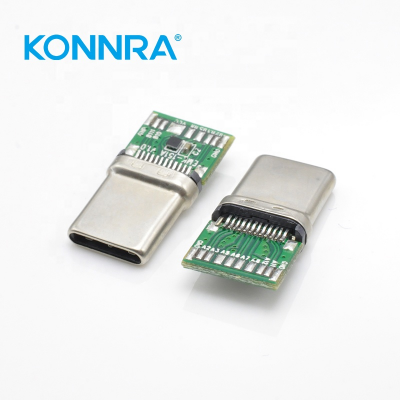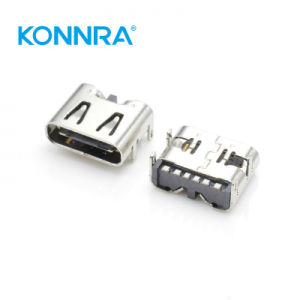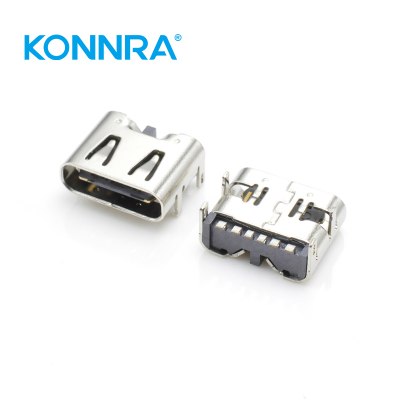Universal interface.
From the day USB-IF released the USB Type-C standard, it hoped to “unify” it through this new interface, because USB Type-C almost directly hits the original electronic product peripheral interface in terms of specification definition. Pain points, creating a “universal” physical interface protocol. This “omnipotence” is reflected in the following aspects:
- In terms of data transfer rate.
USB Type-C supports the latest USB data transmission standard and can support the USB 3.1 Generation 2 protocol, using a set of data channels to transmit data at a rate of up to 10Gbps. In the USB3.2 protocol, by controlling two sets of 10Gbps data channels, a transmission rate of up to 20Gbps can be achieved. Moreover, Thunder 3.0 also announced that it will abandon its own physical interface standard and adopt USB Type-C. Therefore, there should be no suspense that USB Type-c will become the most widely used high-speed data transmission interface standard in the future.

- In terms of power transmission.
USB Type-C can perfectly support the USB PD (USB Power Delivery) fast charging standard and can carry up to 100W of power (20V/5A). This is mainly due to the fact that the USB Type-C architecture contains 4 VBUS lines, which has stronger current transmission capabilities. At the same time, the USB Type-C interface also has two CC lines specifically used for charging protocol communication, which can establish a communication mechanism between the charging device and the powered device during the charging process to achieve adaptive charging process adjustment and maximize the Improve charging efficiency. Change Therefore, in the field of fast charging of portable devices, USB PD based on the USB Type-C interface is also the most accepted fast charging protocol on the market.
- In terms of video transmission.
USB Type-C can achieve high-definition image transmission above 4K through alternate mode. This feature actually allows USB Type-C to replace dedicated A/V interfaces such as DisplayPort and HDMI. Only one physical interface is used in the device to transmit data and video, further reducing the type and number of electronic device interfaces.
- In terms of ease of use.
USB Type-C 0.83cm x 0.26cm is very compact, only 1/3 of the familiar USB Type-A interface. Moreover, USB Type-C supports double-sided reversible insertion, which avoids the trouble of “wrong insertion” during blind insertion, which undoubtedly greatly improves the user experience.

Combined with the above advantages, it is easy for people to make two judgments about the market prospects of USB Type-C:
- Due to the performance improvement and function expansion of USB Type-C, it can penetrate into a wider range of application fields. In addition to the two traditional dominant markets of computer peripherals and mobile terminals, USB Type-C is also used in home appliances, automobiles and other fields, and will have more and more supporters in industry, instrumentation and other fields.
- Furthermore, USB Type-C replaces other interfaces on the same device with its “all-round” characteristics, completing the “unification” of peripheral interfaces. This is also an obvious trend. Currently, there is only one USB Type-C interface on mainstream smartphones, and Apple’s MacBook computers only retain USB Type-Cas a physical interface. The optimized design of these products is a good example.
Because of this, the commercialization process of USB Type-C has been developing rapidly. According to HIS estimates, in the five years from 2015 to 2020, the average annual compound growth rate of USB Type-C shipments was as high as 231%, eventually reaching approximately 2.6 billion. Afterwards, with the increase in the total amount of electronic equipment and the increase in the penetration rate of USB Type-C in different application fields, the market capacity of USB Type-c will remain at a high level.
Connector optimization.
Such market trends are naturally good news for connector manufacturers. But if you want to enter this market and stand out, you need to test the capabilities of connector manufacturers from two aspects: first, technical capabilities, that is, whether they can quickly design and develop products that comply with the USB Type-C standard. The second is the ability to respond to the market, that is, whether it can follow the development rhythm of the market and continuously enrich its product portfolio.
As mentioned above, due to the larger market territory of USB Type-C, there will be higher requirements for USB Type-C connectors accordingly. This is mainly reflected in the following points:.
- Targeted optimization.
Since USB Type-C supports higher transmission rates and greater power, it also requires a more reliable connection, which requires targeted optimization in electrical and mechanical design.
- Set up protective measures.
A more compact appearance means that the internal components and structure of USB Type-C will also be more “refined”, and some measures to avoid damage to the connector during use are naturally indispensable.
- Various forms.
The expansion of the market and different applications have brought about the diversification of USB Type-C connector product forms – some USB Type-C connectors only require simple power supply functions, while others need to support both data and power. Transmitter. Some connectors need to support USB 3.1 SuperSpeed, while others only need to meet the USB 2.0 standard. Some applications have special requirements for waterproof and dustproof connectors, while other applications are not sensitive to this… These diverse needs require more diverse products to support.
- Diversified configuration.
In addition, in order to meet the requirements of different applications and different PCB assembly processes, USB Type-C connector products must be able to provide different configurations. In addition to standard products, product models with special configurations such as compact, low centerline sinker type, upright type, side standing type, etc. also need to be considered in the product planning blueprint.










